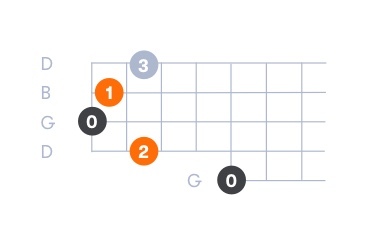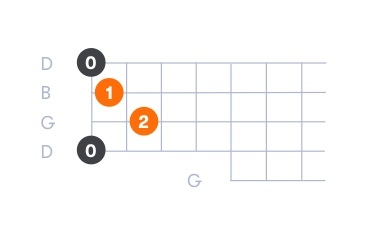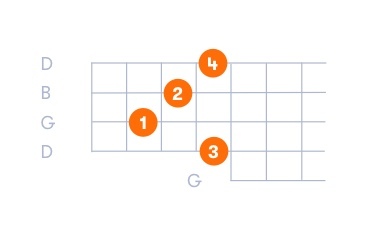Understanding Banjo Chords: A Beginner's Guide
Learning
Learning to play the banjo is an exciting journey, and one of the foundational skills that every player needs is an understanding of chords. Banjo chords form the building blocks for many songs and styles, whether you’re playing bluegrass, clawhammer, or folk.
What Are Banjo Chords?
A chord is simply a group of notes played together at the same time. This creates what is known as harmony. On the banjo, chords are formed by pressing down on specific strings and frets while strumming or picking. Learning different chord shapes and positions allow you to play a wide variety of songs.
The Basics: Open G Tuning
Most beginners start with open G tuning, where the strings are tuned to G, D, G, B, and D (from the 5th string to the 1st string). This tuning makes it easy to play chords because the open strings already form a G chord. Here are a few essential chords to get you started:
G Major: This is the easiest chord to play in open G tuning since you don’t need to press any frets.

C Major / C9: To play a beautiful C9 chord, place your index finger on the 1st fret of the 2nd string and your middle finger on the 2nd fret of the 4th string. For a regular C Major chord, add your ring finger to the 2nd fret of the 1st string.

Note: 1 = Index finger, 2 = Middle finger, 3 = Ring finger.
D7: Place your index finger on the 1st fret of the 2nd string and your middle finger on the 2nd fret of the 3rd string.

Note: 1 = Index finger, 2 = Middle finger, 3 = Ring finger.
Understanding Chord Shapes
Banjo chords are formed using specific shapes that can be moved up and down the neck. There are Three Common Major Chord Shapes used on the banjo. For example:
Barre Chords: Use one finger to press down all the strings at a specific fret. This shape is versatile and can produce major chords at different positions. It is also known as the "second inversion" shape.

F Shape: Similar to the F chord on the guitar, this shape is a cornerstone for banjo players. It is also known as the "Root Shape".

D Shape: Another movable shape that gives you access to more chords up the neck. It is also known as the "1st Inversion" shape.

For a practical guide to basic vamping chord shapes, check out this lesson with tablatures and video tutorials: Vamping and Closed Position Chords on Banjo or Three Common Banjo Chord Shapes - with Chord Diagrams and Tablature.
Tips for Practicing Banjo Chords
Start Slow: Focus on cleanly pressing down the strings and producing clear tones.
Use a Metronome: Practice changing chords in time with a steady beat to improve your rhythm.
Learn Songs: Apply your chord knowledge to simple songs like “Cripple Creek” or “Boil Them Cabbage Down” to make practice more enjoyable.
Experiment: Once you’re comfortable with basic chords, try experimenting with different voicings and transitions.
Daily Practice: Dedicate a few minutes each day to practicing transitions between chords to build muscle memory.
Record Yourself: Listening to your playing can help you identify areas for improvement and track your progress.
Common Mistakes to Avoid
Pressing Too Hard: Many beginners press the strings too hard, which can lead to sore fingers and muted tones. Use just enough pressure to produce a clear sound.
Incorrect Finger Placement: Make sure your fingers are placed just behind the frets, not directly on top or too far away.
Ignoring Timing: Chord changes should happen in rhythm with the music. Practice slowly to ensure smooth transitions.
Skipping Practice: Consistency is key. Even short daily practice sessions are more effective than infrequent, long sessions.
Not Using a Tuner: An out-of-tune banjo can make well-played chords sound off. Always tune your instrument before practicing.
Beyond the Basics: Chord Progressions
Chord progressions are sequences of chords that form the structure of a song. For example, the I-IV-V progression (G, C, D in the key of G) is a staple in bluegrass and folk music. Understanding these progressions will help you play along with other musicians and create your own arrangements.
Using Banjo Chords Creatively
Banjo chords aren’t just about accompaniment. You can use them to add texture and variation to your playing. Try incorporating rolls, hammer-ons, pull-offs, or slides within your chord shapes to create dynamic and interesting sounds.
For more inspiration, explore these Backup Licks or Up the Neck Banjo Backup lesson.
Final Thoughts
Mastering banjo chords takes time and practice, but it’s an essential step in becoming a confident player. Start with the basics, practice regularly, and don’t be afraid to explore new techniques and styles. With dedication, you’ll be strumming and picking your way through your favorite tunes in no time.